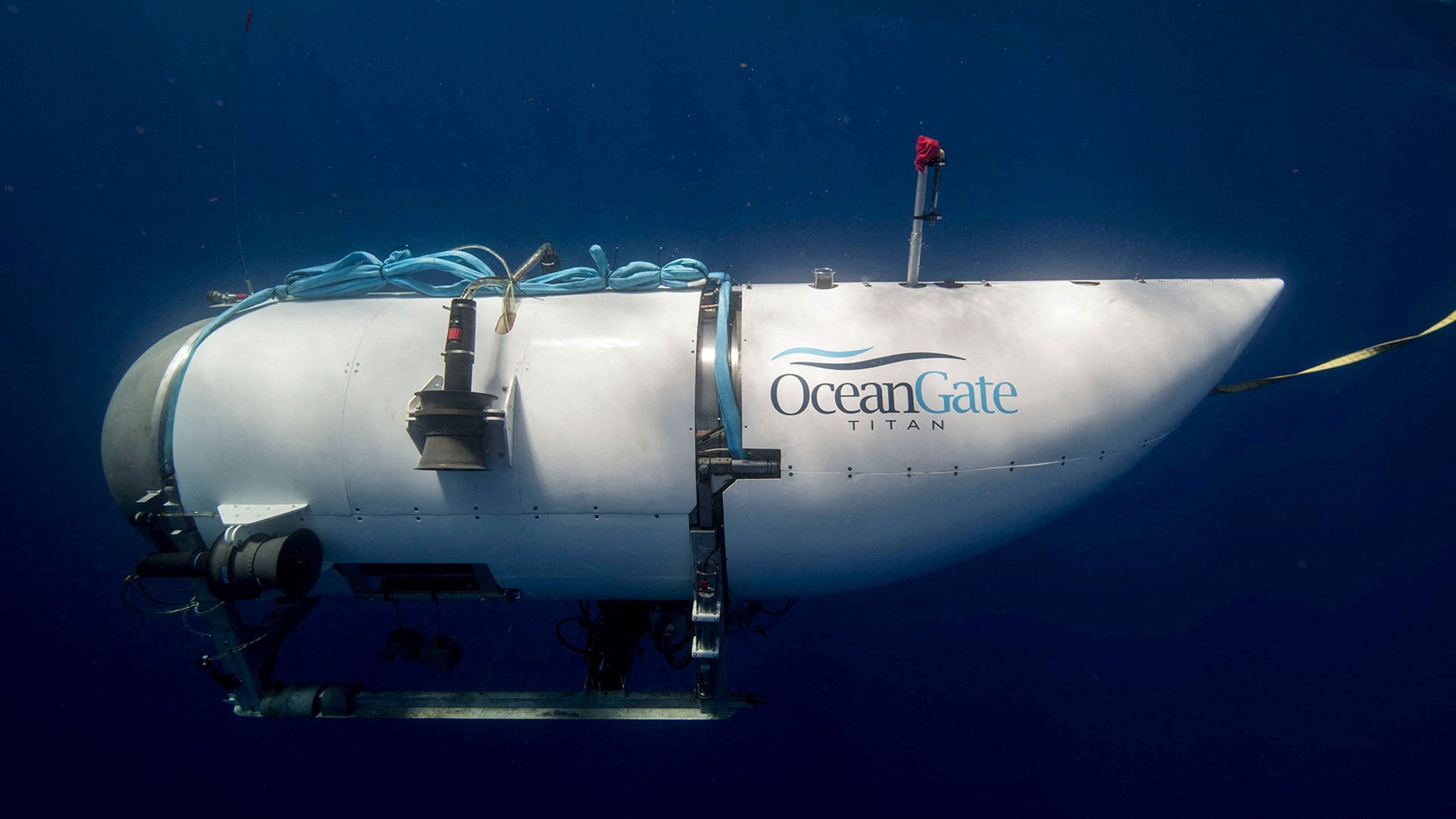SUMMARY
This is AI generated summarization, which may have errors. For context, always refer to the full article.

Canadian safety officials on Friday, June 23, opened an investigation into the undersea implosion of a tourist submersible that killed all five people aboard while diving to the century-old wreck of the Titanic, raising questions about the unregulated nature of such expeditions.
A debris field from the submersible Titan was found at the bottom of the North Atlantic on Thursday, June 22, by a robotic diving vehicle deployed from a Canadian search vessel, ending an intense five-day international rescue effort.
Fragments of Titan, which lost contact with its surface support ship about one hour and 45 minutes into a two-hour descent on Sunday, June 18, littered the seabed about 1,600 feet (488 meters) from the bow of the Titanic wreck, about 2-1/2 miles (4 km) below the surface, US Coast Guard Rear Admiral John Mauger said.
He told reporters on Thursday the debris was consistent with “a catastrophic implosion of the vehicle,” meaning the 22-foot-long vessel ultimately collapsed and was crushed under the immense hydrostatic pressure at that depth.
The five who died included Stockton Rush, founder and chief executive officer of US-based OceanGate Expeditions, which operated the sub and charged $250,000 per person to make the Titanic trip. He was piloting the craft.
The others were British billionaire and explorer Hamish Harding, 58; Pakistani-born businessman Shahzada Dawood, 48, and his 19-year-old son, Suleman, both British citizens; and French oceanographer Paul-Henri Nargeolet, 77.
Nargeolet was a leading authority on the Titanic, the British luxury liner that struck an iceberg and sank on its first voyage in April 1912, killing more than 1,500 people aboard.
In a statement on Friday, Canada’s Transportation Safety Board (TSB) said it was launching a “safety investigation regarding the circumstances” of Titan’s operation because its surface support vessel, the Polar Prince, was a Canadian-flagged ship.
A TSB team was dispatched to St. John’s, Newfoundland, about 400 miles north of the accident site, to gather information and conduct interviews, the agency said.
Guillermo Söhnlein, who co-founded OceanGate with Rush in 2009, said Rush was “keenly aware” of the dangers of exploring the ocean depths.
“Stockton was one of the most astute risk managers I’d ever met,” said Söhnlein, who left the company in 2013, retaining a minority stake. “He was very risk-averse.”
Questions about risk
But others in the close-knit community of submersible operators and experts noted that Stockton and his company opted to forgo certification of Titan’s novel design from industry third parties such as the American Bureau of Shipping.
Some have questioned Stockton’s choice of carbon fiber to fabricate the critical pressure hull of his craft.
“OceanGate had created its own experimental vehicle with materials avoided by others, decided to bypass the certification process designed to assure safety, and chose to ignore the warnings from many experts within the submersible community,” investment manager Ray Dalio, co-founder of the OceanX sea exploration initiative, said in a LinkedIn post on Friday.
British Titanic explorer Dik Barton likewise pointed to issues raised about the design and maintenance of Titan, saying, “there were many red flags flying here.”
One would-be Titan passenger, Las Vegas-based investor Jay Bloom, told Reuters he declined a last-minute chance to join the ill-fated Titan excursion with his son out of safety concerns.
Bloom, a licensed helicopter pilot, said he was particularly worried about Stockton’s use of consumer-grade parts on Titan, including a video game joystick to control the vessel, and was “spooked” by the fact that the submersible would be bolted shut from the outside, preventing passengers from getting out on their own in an emergency.
Questions about Titan’s safety surfaced in 2018 during a symposium of industry experts and in a lawsuit by OceanGate’s former head of marine operations, which was settled later that year.
The disaster marks the first known fatalities in more than 60 years of civilian deep-sea exploration. But OceanGate was free to go its own way because international waters are beyond government regulation, according to industry experts.
The company has not addressed queries about its lack of industry certification or other safety issues.
Sounds of disaster
The US Coast Guard’s Mauger said it was too early to say when the Titan met its fate. But the position of debris relatively close to the wreck, and the time that elapsed before contact with Titan was lost suggest the disaster occurred near the end of Sunday’s descent.
The US Navy monitors that part of the Atlantic for submarine activity, and said an analysis of acoustic data detected “an anomaly consistent with an implosion or explosion” near the submersible’s location when communication with Titan was lost.
The acoustic data was shared immediately with the US Coast Guard command, according to Navy officials, who spoke on condition of anonymity. It was decided the acoustic data was not definitive and the search and rescue mission should continue.
Moviemaker James Cameron, who directed the 1997 Oscar-winning film “Titanic” that did much to revive global interest in the 1912 sinking, said he learned of the acoustic findings within a day of the submersible disappearing and knew what it meant.
“I sent emails to everybody I know and said we’ve lost some friends. The sub had imploded,” Cameron, who has ventured to the wreck in submersibles, told Reuters.
Scientist and journalist Michael Guillen, who survived an expedition in 2000 that became trapped in the wreck’s propeller, said: “We need to stop, pause and ask this question, ‘why do you want to go to the Titanic, and how do you get there safely?'” – Rappler.com
Add a comment
How does this make you feel?





There are no comments yet. Add your comment to start the conversation.